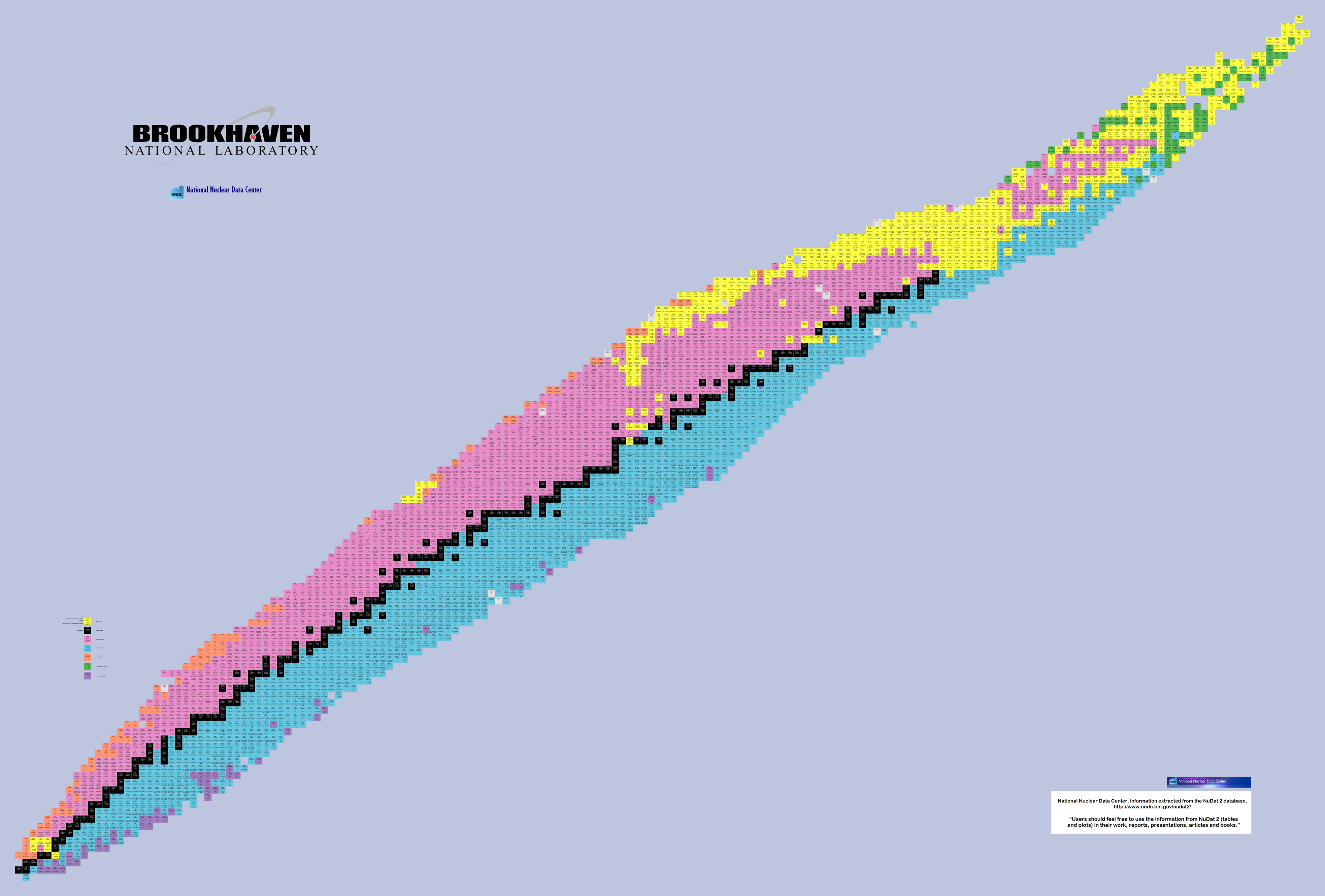I noticed on the arXiv server this morning that a preprint has appeared with the 2013 update of the project, run by Michael Thoennessen of MSU, documenting the experimental discover of nuclides.
Nuclides are the nuclear equivalent of chemical elements - the basic units of matter. Each element is characterised by the number of protons in the nucleus (or equivalently by the number of electrons orbiting a neutral atom of the element). They run from element #1 - Hydrogen, with one proton, up to element #118, with 118 protons in the nucleus. Element 118 has no official name, as yet. Nuclides are characterised not just by number of protons, but also the number of neutrons in the nucleus. There are many more nuclides than elements, as each element can host a range of numbers of neutrons in the nucleus.
The chart attached to this post is know as the Chart of the Nuclides, or sometimes Segré Chart. It is the equivalent of the periodic table of elements, but for nuclides. While we don't see new elements discovered every year, most years see the discovery of new nuclides. The new members of the nuclear family can be seen in section 2 of the above preprint. 2013 was actually quite a lean year, with 67 discovered in 2012. You can see more details at the discovery project's home page.
Perhaps surprisingly, I (as a theoretician) am a co-author on two discovery papers; for the nuclides Tantalum-155 and Rhenium-159, thanks to my collaboration with the group from Liverpool. I provided some theoretical input on the structure of these nuclei to help guide the interpretation of the experiment in making the identification of the nuclides in question.
ResearchBlogging tag:
M. Thoennessen (2014). 2013 Update of the discoveries of nuclides arXiv arXiv: 1402.1663v1
M. Thoennessen (2014). 2013 Update of the discoveries of nuclides arXiv arXiv: 1402.1663v1

No comments:
Post a Comment